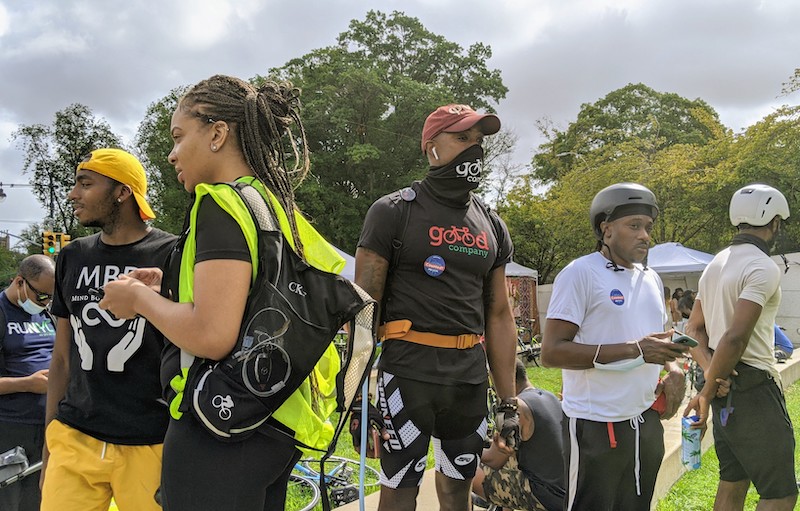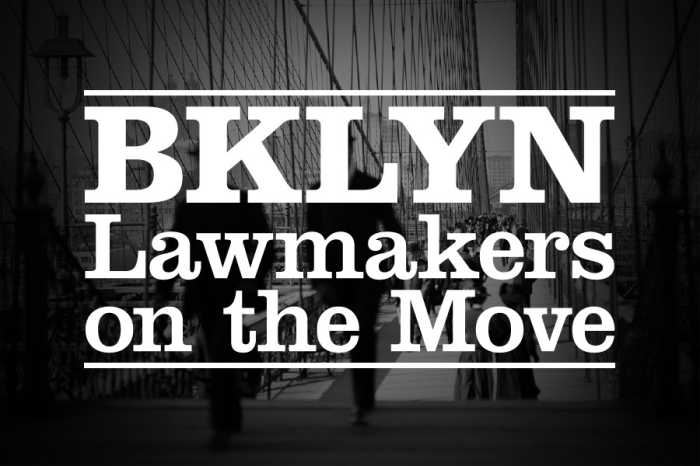Congresswoman Yvette D. Clarke (D-Central Brooklyn) and Borough President Eric Adams partnered with Brooklyn NAACP “Count My Block” initiative, New York Census 2020 teams, the Good Co. Bike Club and Mind Body Results (MBR) organizations, and other electeds to kick off a census taking mission on bikes throughout undercounted neighborhoods in Brooklyn this Sunday, September 13.
The large group of roughly 100 cyclists, many of whom were Black and Brown, met up in front of the Brooklyn Museum steps on the corner of Eastern Parkway and Washington Avenue, before splitting into two smaller teams.
One team tackled the Canarsie and Flatbush neighborhoods, while the other went to Brownsville, East New York, and Cypress Hills. They made stops at Allan’s Bakery on Nostrand Avenue and Maple Street, Canarsie L Train Station on Rockaway Parkway and Glenwood Road, Highland Park on Jamaica Avenue, and Betsy Head Park on Thomas S Boyland Street.
At each stop, cyclists fanned out either on bike or on foot to individually sign people for the census online via devices.
While people did sign up, many cyclists said they were met with some distrust or the insistence that residents had already taken the census and therefore didn’t need to. In total, they reached 60 households over the course of a few hours of approaching people on the street, in public areas, and around shop fronts.
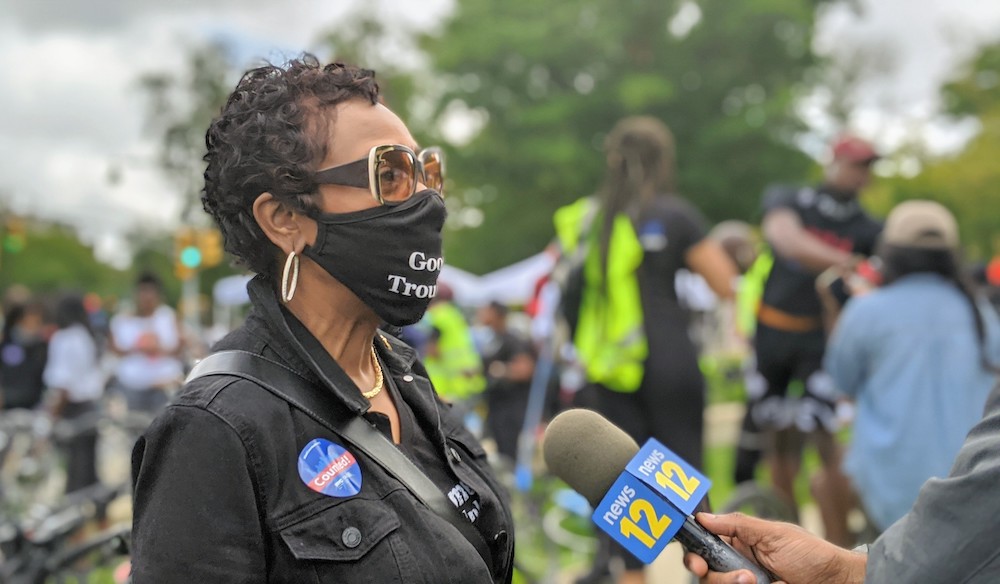
“After the count, there’s no resources to get laptops and tablets to our students who have to work remotely. When we don’t say that we’re here by being counted in the census–when there’s new housing, there’s no indication that there’s working-class, immigrant folks that live in our Black and Brown communities that need affordable housing,” said Clarke about the different city programs affected by the census.
Census data impacts hundreds of billions of dollars of federal funding, said Clarke, that trickles down to community programs and services, which is why elected officials and organizations consider it so crucial for residents to take it seriously and complete. Clarke and others slammed the Trump administration for moving the census deadline to begin with and called it a “tremendous impediment” to getting everyone counted.
Community Advocate Joan Alexander-Bakiriddin, representing the National Association for the Advancement of Colored People (NAACP), said the census effort was a part of the “self-response” to communities, especially communities of color, chronically undercounted. “First you count your home; then if you’re in a building, the building; then your block, your community,” said Bakiriddin about the program. “You at least get your friends and family.”
NYC Census 2020 Field Director Kathleen Daniel said, “We’re going to shed some pandemic pounds and cycle. And go to four different areas where the self-response has been very low for Brooklyn. Brooklyn being only at 56.2 percent self response rate for the census. And we only have 17 more days for the decade to get the census done. And then it’s game over.”
Daniel said the census deadline being abruptly shortened by a month is basically “census oppression” and that regardless of the amazing strides made during the health pandemic the nation is still reeling and vastly undercounted.
Daniel said the people who will be hit hardest are immigrants and people of color in Brooklyn that are hard-to-count. Hard-to-count (HTC) groups are defined by different demographics, such as renters, children under 5, homeless individuals, lower income households, people with less access to internet and education, English language learners, undocumented immigrants, and racial and ethnic minorities.
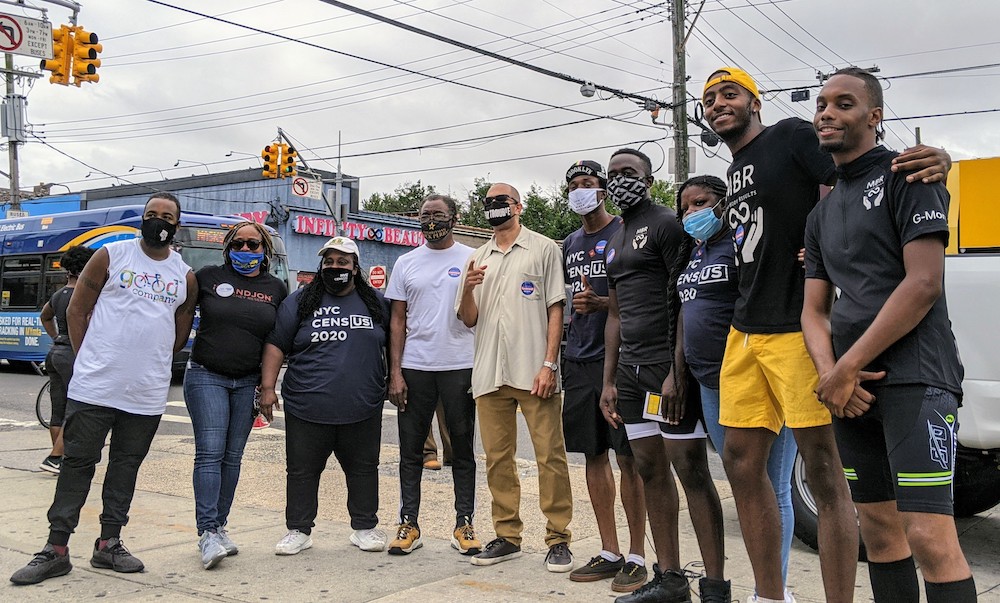
Kings County ranks third in the state with 28 percent HTC, and New York State ranks, at 22.9 percent, among the states with the highest HTC in the nation. A Census Bureau data map breaks down the parts of Brooklyn, Queens, the Bronx; as well as Nassau and Suffolk Counties in Long Island; and Sullivan, Rockland, Erie, Monroe, and Jefferson areas upstate with HTC community census tracts, or neighborhoods, in New York state.
In the last decennial census, according to CUNY Center for Urban Research, “75.8 percent of the state’s households mailed back their questionnaire, requiring more costly and difficult in-person follow up from the Census Bureau” to count the rest of the population. The usual emergency means to count people door-to-door were much harder to accomplish this year during the COVID-19 crisis.
Daniel described the residents during quarantine who often came to their doors without masks or weren’t dressed. Her team found that people already in public wearing PPE’s are more willing to sign up for the census and maintain social distance.
Founder and CEO Andrew Bennett of Good Co. Bike Club provided a chunk of the cyclists that volunteered on Sunday. The organization is a weekly biking club started during June’s Black Lives Matter protests.The club also does community and social justice outreach through riding. “The census is very important and a lot of people don’t realize the significance of it, so we figured we a biker could cover a lot of ground and go out to lower-income communities and help people fill out the census,” said Bennett, who is a Brownsville and Flatbush native. “This is like back in my community. That’s home for me. It’s personal.”
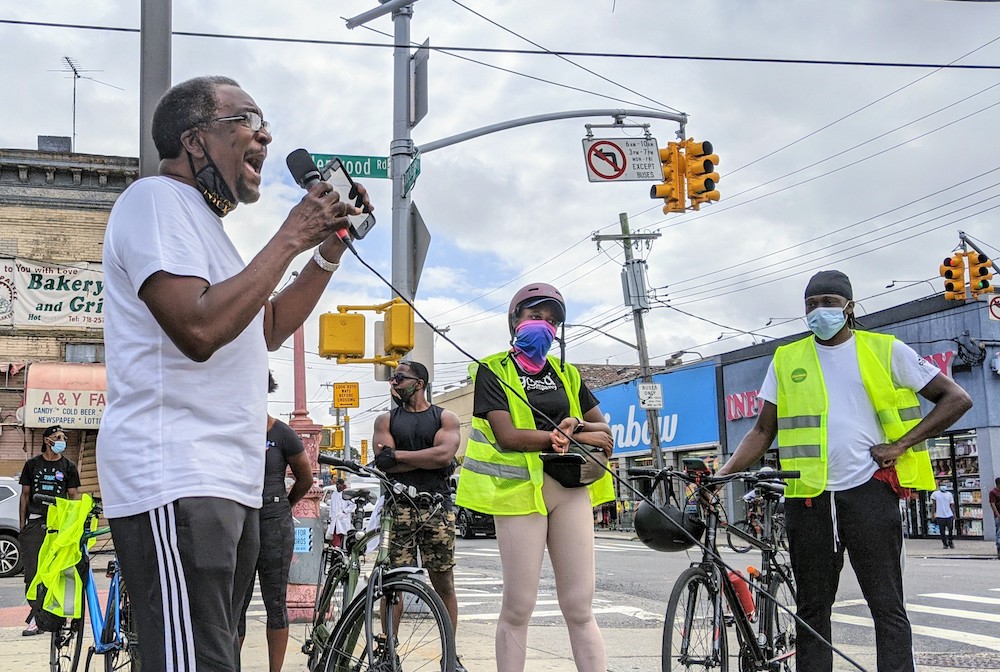
At various stops Black Lives Matter (BLM) Brooklyn Branch President Anthony Beckford, U.S. Rep. Hakeem Jeffries (D-Brooklyn, Queens) and Assemblyman Nick Perry (D-East Flatbush, Canarsie, Brownsville) showed up to lend their support and offer words of encouragement.
Perry said, shouting to people at the busy intersection in Canarsie, “Half of the people who live in Canarsie have not been counted and will not be counted. You’re going to lose a lot of money. You’re going to lose representation.You’re not going to have the programs we now pay for. Your kids and schools are not going to be up to standard, and in this COVID time you need educational support. Your sanitation will be hit, so your garbage won’t get picked up, and your streets will be dirtier.”
Census data is also used to “determine the assigning of seats in the U.S. House of Representatives, define legislative districts and school districts, and inform redistricting,” said the UC Berkeley Hard-To-Count team.
“We want to encourage people to fill out the census as if your life depends on it because your quality of life absolutely depends on it,” said Jeffries, “We have to proceed with the fierce urgency of now. It takes 10 minutes but it will lead to 10 years of legislative representation.”


